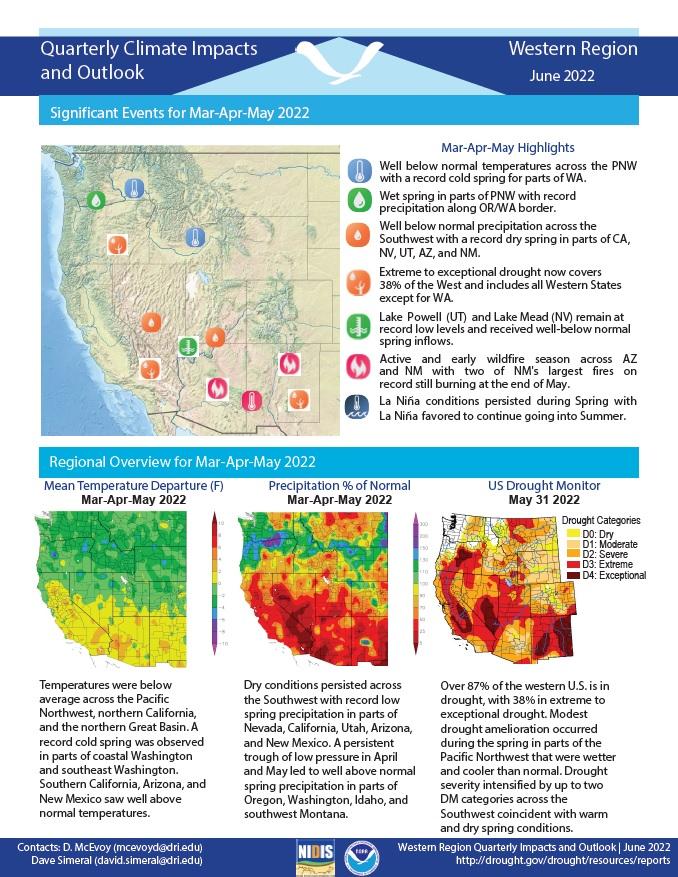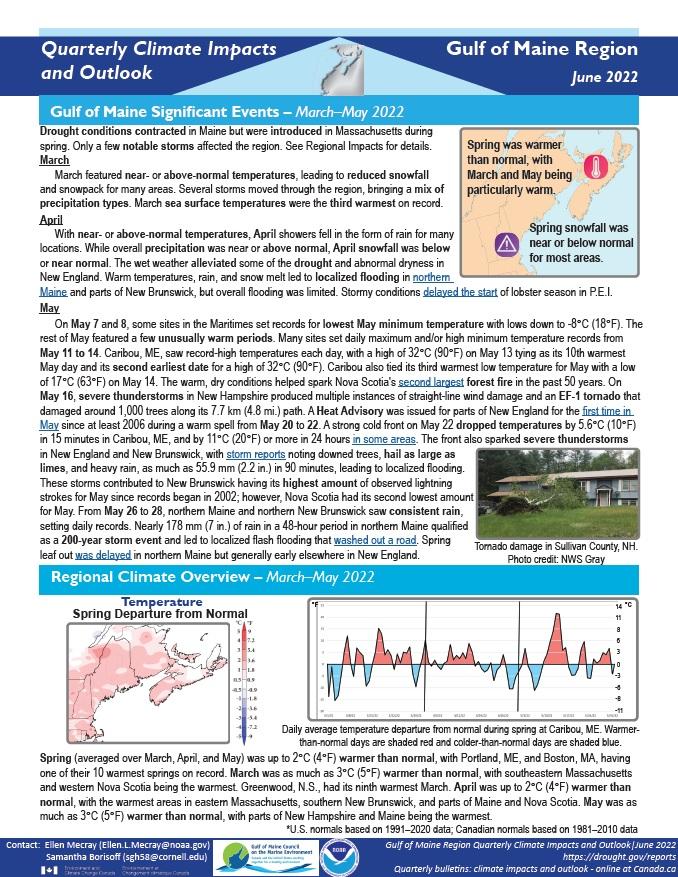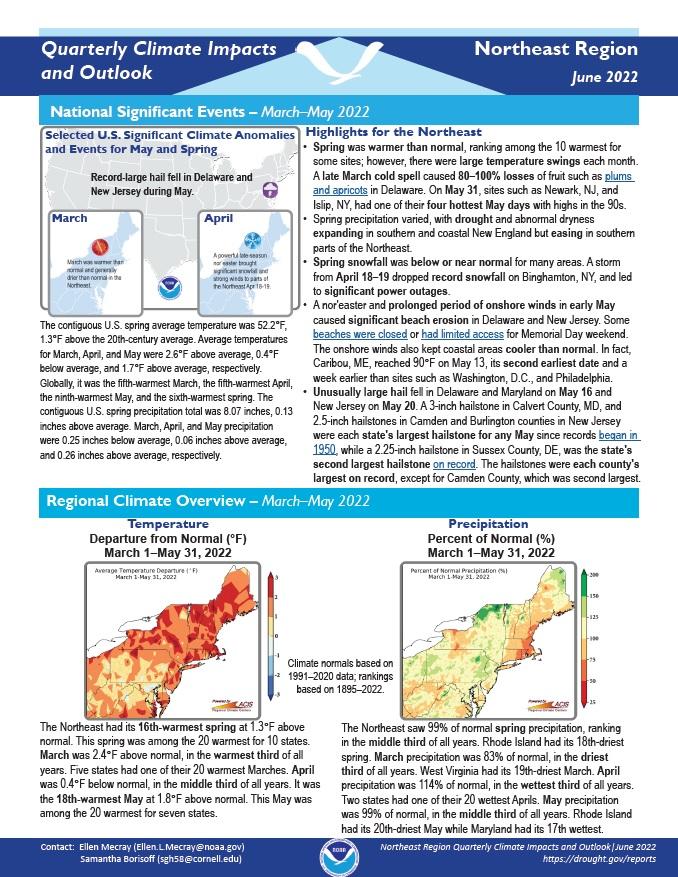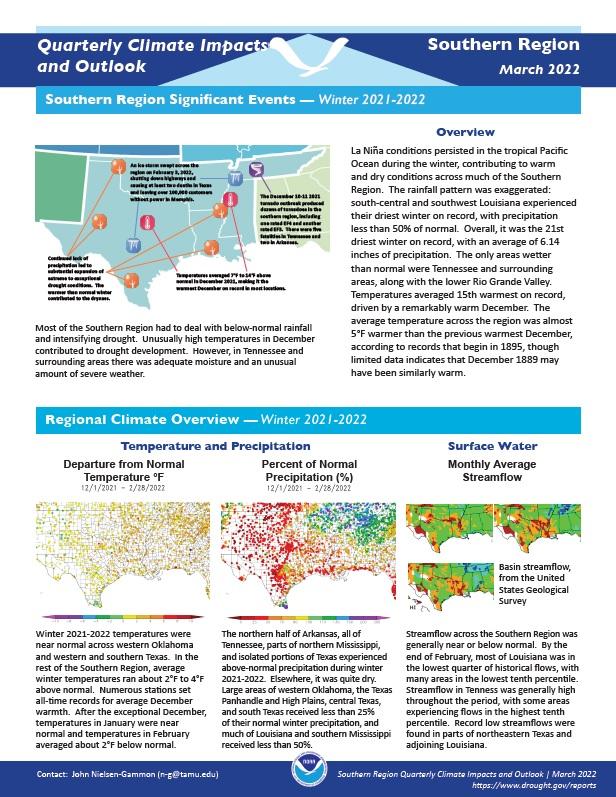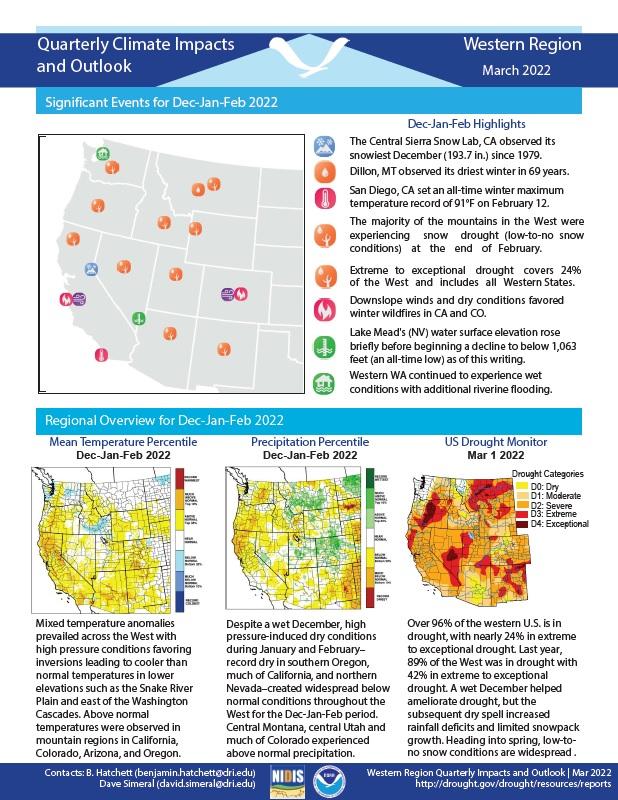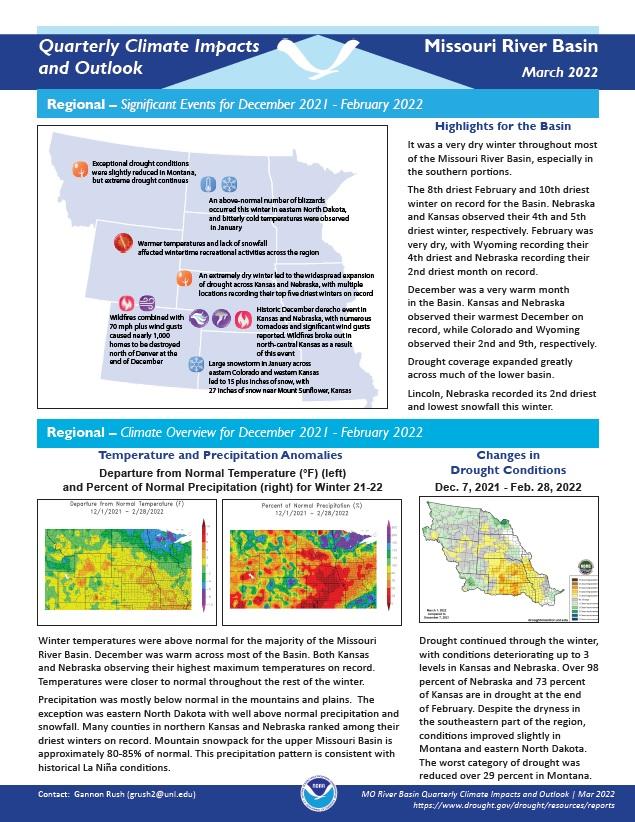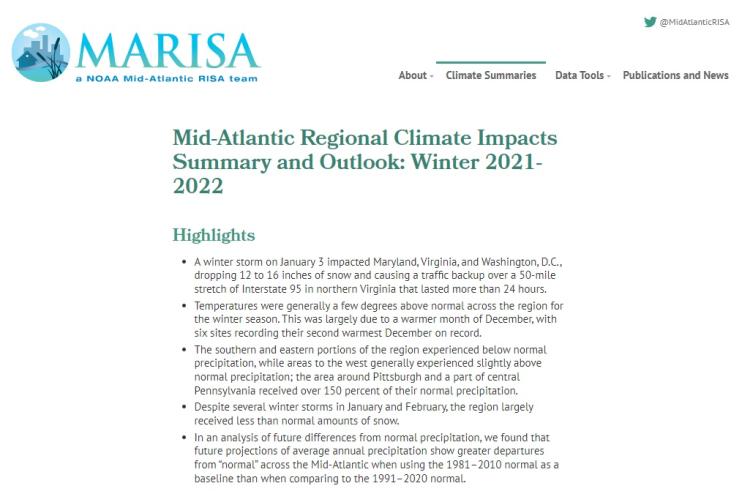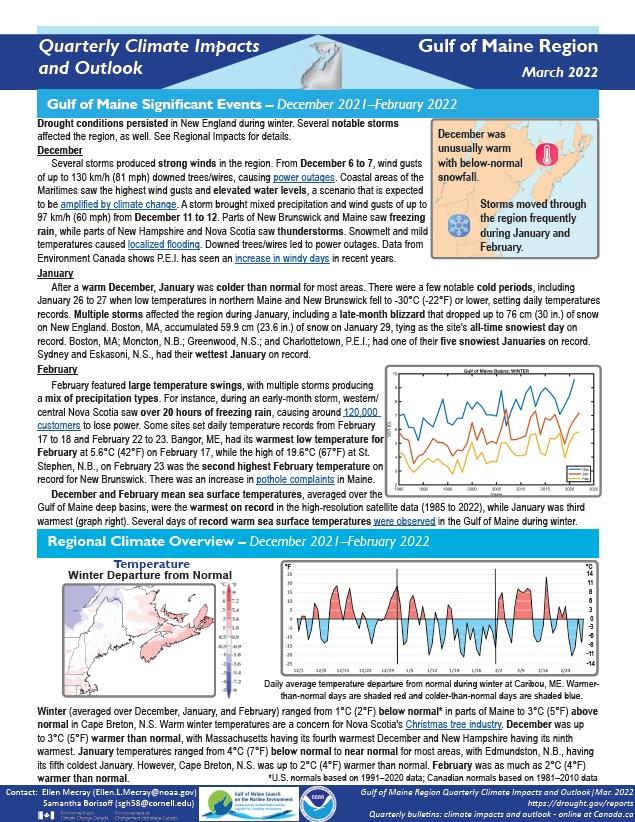Quarterly Climate Impacts and Outlook for the Western Region for March–May 2022. Dated June 2022.
Temperatures were below average across the Pacific Northwest, northern California, and the northern Great Basin. Dry conditions persisted across the Southwest with record low spring precipitation in parts of Nevada, California, Utah, Arizona, and New Mexico.
Quarterly Climate Impacts and Outlook for the Gulf of Maine Region for March–May 2022. Dated June 2022.
Spring was up to 2°C (4°F) warmer than normal, with Portland, Maine, and Boston, Massachusetts, having one of their 10 warmest springs on record. Spring precipitation ranged from 50% of normal to 175% of normal.
Quarterly Climate Impacts and Outlook for the Northeast Region for March–May 2022. Dated June 2022.
Spring was warmer than normal, ranking among the 10 warmest for some sites; however, there were large temperature swings each month. Spring precipitation varied, with drought and abnormal dryness expanding in southern and coastal New England but easing in southern parts of the Northeast.
Quarterly Climate Impacts and Outlook for the Southeast Region for March–May 2022. Dated June 2022.
Above-average temperatures were recorded over the entire Southeast, with much of Florida and eastern North Carolina observing more than 2°F above normal. Precipitation ranged from below average in the eastern Carolinas, southern Florida, and Puerto Rico, to above average in northern Florida, including the Florida Panhandle and Alabama.
Quarterly Climate Impacts and Outlook for the Pacific Region for March–May 2022. Dated June 2022.
For the March–May period, precipitation was above normal in Palau, Saipan, northern areas of FSM (Chuuk, Kosrae, Yap), and in portions of RMI (Kwajalein, Majuro). Conversely, below-normal rainfall was observed in southern FSM (Kapingamarangi), American Samoa, and across much of the Hawaiian Islands (March–April) except for windward areas of the Island of Hawaiʻi where above-normal rainfall for April and May was observed.
Quarterly Climate Impacts and Outlook for the Southern Region for December 2021–February 2022. Dated March 2022.
Winter 2021–2022 temperatures were near normal across western Oklahoma and western and southern Texas. In the rest of the Southern Region, average winter temperatures ran about 2°F to 4°F above normal. The northern half of Arkansas, all of Tennessee, parts of northern Mississippi, and isolated portions of Texas experienced above-normal precipitation during winter 2021–2022. Elsewhere, it was quite dry.
Quarterly Climate Impacts and Outlook for the Western Region for December 2021–February 2022. Dated March 2022.
Above-normal temperatures were observed in mountain regions in California, Colorado, Arizona, and Oregon. Despite a wet December, high pressure-induced dry conditions during January and February created widespread below-normal conditions throughout the West.
Quarterly Climate Impacts and Outlook for the Missouri River Basin for December 2021–February 2022. Dated March 2022.
Winter temperatures were above normal for the majority of the Missouri River Basin. Precipitation was mostly below normal in the mountains and plains. The exception was eastern North Dakota with well-above-normal precipitation and snowfall. Many counties in northern Kansas and Nebraska ranked among their driest winters on record.
Quarterly Climate Impacts and Outlook for the Mid-Atlantic Region for December 2021 - February 2022. Dated March 2022.
Temperatures were generally a few degrees above normal across the region for the winter season. This was largely due to a warmer month of December, with six sites recording their second warmest December on record. The southern and eastern portions of the region experienced below normal precipitation, while areas to the west generally experienced slightly above normal precipitation.
Quarterly Climate Impacts and Outlook for the Gulf of Maine Region for December 2021 - February 2022. Dated March 2022.
Winter ranged from 1°C (2°F) below normal in parts of Maine to 3°C (5°F) above normal in Cape Breton, N.S. Warm winter temperatures are a concern for Nova Scotia's Christmas tree industry. Winter precipitation ranged from 75% of normal to 175% of normal.


